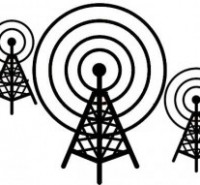
Burnside v. State (Nev. Supreme Ct. – June 25, 2015)
Pursuant to NRS 50.265, a lay witness may testify to opinions or inferences that are rationally based on the perception of the witness; and helpful to a clear understanding of the testimony of the witness or the determination of a fact in issue. NRS 50.275 provides that a qualified expert may testify to matters within their special knowledge, skill, experience, training or education when scientific, technical or other specialized knowledge that will assist the trier of fact to understand the evidence or to determine a fact in issue.
The issue is whether testimony related to cell phone tower transmissions falls within the realm of expert testimony.
The victim in this case, Kenneth Hardwick, was a former professional basketball player who was known to carry quite a bit of cash, wear expensive clothing and jewelry, and carry cigars in a silver traveling humidor. In the early morning of December 5, 2006, Hardwick was at the Foundation Room Lounge at the Mandalay Bay Resort and Casino in Las Vegas. Around 3:30 a.m., Burnside and McKnight entered the Foundation Room Lounge. About 30 minutes later, Hardwick left the Foundation Room Lounge and got in an elevator. McKnight followed Hardwick into the elevator. After exiting the elevator, Hardwick approached the west valet stand to retrieve his car, and McKnight reunited with Burnside in the casino and then walked to the parking garage near the west valet stand. At the valet stand, Hardwick noticed that an acquaintance was involved in a disagreement over a missing valet ticket, and he attempted to negotiate the dispute. Meanwhile, Burnside and McKnight got into a white Mazda, parked in a no parking zone, and watched Hardwick for about an hour. When Hardwick eventually exited the parking structure, Burnside and McKnight followed him.
A short time later, Hardwick pulled up to a Jack-in-the-Box drive-thru window. At the time, Hardwick was speaking on his cell phone with his child’s mother, who heard loud bangs over the phone. A video recording obtained from a surveillance camera showed a man wearing a “puffy” black jacket point a gun and shoot into Hardwick’s car several times. Hardwick approached the drive-thru window, indicating that he had been shot. Hardwick suffered four gunshot wounds to his chest and both arms. While the gunshot wound to his chest caused the most damage to his body, all of the wounds resulted in great blood loss and contributed to his death.
About a week later, the police showed a witness a set of photographs, and she tentatively identified McKnight as the driver of the white car, but was unable to identify the passenger. Subsequently, after reviewing still photographs taken from the surveillance videos obtained from the Mandalay Bay, she was able to identify Burnside and McKnight as the men she saw after the shooting based on their clothing.
Other evidence linked Burnside to Hardwick’s murder. The clothing that Burnside and McKnight were wearing when they were recorded by the Mandalay Bay surveillance cameras matched the clothing worn by the men in the Jack-in-the-Box video surveillance. McKnight’s mother owned a white Mazda, which she had loaned to McKnight. In December 2006, McKnight approached a family friend, Edmonds, and asked Edmonds to store a car in Edmonds’ garage. Edmonds agreed. The following day, McKnight’s mother retrieved the car from Edmonds’ garage. During a search of Edmonds’ home, police found 9mm ammunition in a room in which McKnight had stayed in December 2006. Eight 9mm shell casings had been recovered from the Jack-in-the-Box drive-thru, all fired from a single firearm. During a search of Burnside’s mother’s home, the police recovered a day planner with a handwritten entry dated February 16, 2007, that suggested that Burnside’s photograph had been shown on Crime Stoppers. Additionally, Burnside’s and McKnight’s cell phone records showed that calls made from or received by their cell phones in the hours surrounding the murder were handled by cell phone towers near the Mandalay Bay.
